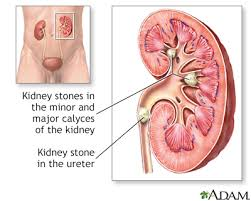For a client diagnosed with folic acid deficiency anemia who is experiencing activity intolerance, what should the nurse include in the plan of care?
Provide a quiet atmosphere for undisturbed sleep.
Cluster activities in the morning when well-rested.
Identify ways to conserve energy when performing activities.
Recommend small frequent iron-rich meals.
The Correct Answer is C
Choice A Reason
Providing a quiet atmosphere for undisturbed sleep is beneficial for all patients, especially those recovering from illness. However, it does not directly address the issue of activity intolerance. Adequate rest is important, but the primary concern with activity intolerance is managing energy levels during waking hours to improve the patient's ability to engage in activities.
Choice B Reason
Clustering activities in the morning may seem like a good strategy when the patient is well-rested. However, this could lead to rapid depletion of energy reserves and exacerbate activity intolerance. It is more effective to spread activities throughout the day to manage energy levels better.
Choice C Reason
Identifying ways to conserve energy is a key intervention for managing activity intolerance. This can include teaching the patient energy-conservation techniques, such as sitting while showering or dressing, taking frequent breaks, and prioritizing tasks. This approach helps patients with folic acid deficiency anemia to participate in activities without excessive fatigue.
Choice D Reason
While nutrition is important in the management of anemia, recommending small frequent iron-rich meals does not directly address activity intolerance. Folic acid deficiency anemia requires dietary intake of folate-rich foods or supplements. Iron is important, but the focus for folic acid deficiency should be on folate.
Nursing Test Bank
Naxlex Comprehensive Predictor Exams
Related Questions
Correct Answer is B
Explanation
Choice A reason:
A respiratory rate of 24/min is slightly elevated, which can be expected in a client with pneumonia due to the body's attempt to increase oxygen intake and carbon dioxide elimination. However, this rate does not directly indicate ineffective airway clearance.
Choice B reason:
A weak, nonproductive cough is a key indicator of ineffective airway clearance. In pneumonia, the presence of secretions in the airways is common, and an effective cough is necessary to clear these secretions. A weak cough that does not produce sputum suggests that the client is unable to clear their airways effectively, which can lead to impaired gas exchange and worsening of symptoms.
Choice C reason:
Pulse oximetry (SpO2) of 90% indicates that the client's oxygen saturation is below the normal range, which is typically between 95-100% for healthy individuals. While this finding is concerning and warrants intervention, it is a result of ineffective airway clearance rather than a direct indicator of it.
Choice D reason:
Shortness of breath with activity is common in clients with pneumonia and can result from various factors, including impaired gas exchange, decreased lung compliance, and increased work of breathing. While it may be associated with ineffective airway clearance, it is not as specific as a weak, nonproductive cough for indicating this particular problem.
Correct Answer is C
Explanation
Choice A Reason
Increasing sodium intake is not recommended for patients who have passed a calcium oxalate stone. High sodium intake can increase calcium in the urine, which can contribute to the formation of new stones. Therefore, patients are often advised to limit their sodium intake to reduce the risk of stone recurrence.
Choice B Reason
Considering a move to an area with higher humidity is not a standard recommendation for preventing the recurrence of calcium oxalate stones. While climate can affect hydration levels, it is more important for the patient to focus on direct measures to stay hydrated, such as drinking more fluids.
Choice C Reason
Increasing water intake is a key recommendation for patients who have had calcium oxalate stones. Adequate hydration is essential to dilute the urine, which helps prevent the formation of new stones. Patients are often advised to drink enough water to produce at least 2.5 liters of urine per day.
Choice D Reason
Decreasing the intake of all calcium-rich foods and beverages is not generally recommended for patients with calcium oxalate stones. In fact, a moderate intake of dietary calcium can help reduce the risk of stone formation by binding with oxalate in the intestines, which prevents it from being absorbed into the urine. Patients should consult with a healthcare provider or dietitian to determine the appropriate amount of dietary calcium.

Whether you are a student looking to ace your exams or a practicing nurse seeking to enhance your expertise , our nursing education contents will empower you with the confidence and competence to make a difference in the lives of patients and become a respected leader in the healthcare field.
Visit Naxlex, invest in your future and unlock endless possibilities with our unparalleled nursing education contents today
Report Wrong Answer on the Current Question
Do you disagree with the answer? If yes, what is your expected answer? Explain.
Kindly be descriptive with the issue you are facing.
